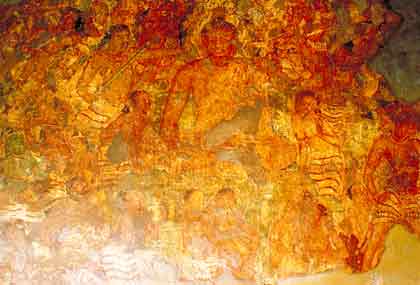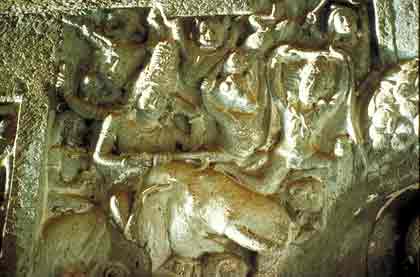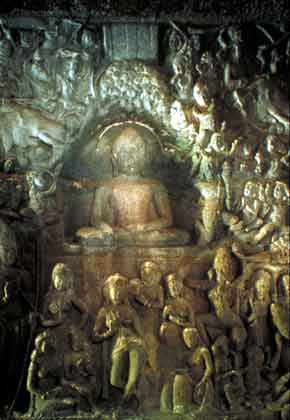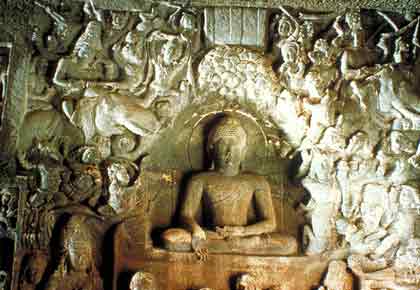Buddhist Fables
- The Story of Ruru Deer
- The Story of Two Swans
- The Hare on The Moon
- The Story of Chaddanta Elephant
- The Story of Great Monkey
- The Story of The Two Deer
- The Story of a Buffalo
- Silava Elephant
- The Wise Monkey
- The Story of the Golden Swan
- The Story of The Great Ape
- The Mighty Fish
- Story of the Monkey King
- Lion and Jackal
- Somdatta
- The Story of the Crows
- The Monkey Brothers
- The Story of Nigrodha Deer
- Kalbahu
- Nandivisala
- Coronation of Owl
- The Feast of the Dead
- The Heart of the Monkey
- The Story of a Rooster
- The Story of a Tigeress
- The Pigeon and The Crow
- The Story of Romaka Pigeon
- The Story of Khardiya Deer
- The Thankless Monkey
- Can A Fool Ever Act Good!
- The Story of a Tortoise
- Jackal –The Arbitrator
- The Story of a Snake Charmer
- The Leather Garment
- The Giant Crab
- Mahilaimukha Elephant
- The Story of Vinilaka
Buddhist Classics
- The Sacrifice of Vessantara
- The Wisdom of Vidhura Pandita
- Chullabodhi – The Conqueror of Anger
- The Story of Kushinagar
- The Virtue of Forbearance
- Matanga – The World’s First Crusader of Untouchability
- The Temptation of Isisanga
- The Flight of Sakka
- Mahajanaka’s Renunciation
- The Wine-Jar
- The Sacrifice of Sivi
- The Box of the Monster
- The Lotus Stalk
- Kandari – The Handsome Prince
- Ghat: The Virtuous King
- Supparaka – The Ancient Mariner
- Sankhapala: The Naga King
- Champeyya
- The Baveru Island
- The Great Gambler
- The Story of The Dumb Prince
- The Naive House-Holder
- The Jewelled Serpent
- The Mango-Thief
- The Foot-Print Reader
- The Story of Sutasoma
- The Story of Sudasa
- The Little Bowman
- The Envoy of Belly
- Story of a Drummer
- The King, Who Knew The Language Of Animals
- The Happy Man
- Sama: The Good Son
Life and Legends of Buddha
- Gotama Buddha
- Birth Story of Gotama
- Maha Maya’s Dream
- Sage Asita’s Visit
- The Four Sights
- Story of Renunciation
- The Buddha’s Victory over Mara
- The Personality of the Buddha
- Nalgiri Elephant
- Story of Kumara Kassapa
- Dhamma-Chakka-Pavattana-Katha
- The Buddha’s Teaching of Abhidhamma
- Buddha's Visit to Rahula Mata
- The Savatthi Miracles
- The Flying Buddha
- Story of Parinibbana
- Suddhodana
- Sujata
- Sariputta
- Moggallana
- Story of Mara
- Bimbisara
- Nanda
- Janapada Kalyani Nanda
- The Spiritual Journey of Janapada Kalyani
- Phussa Buddha
- Vipassi Buddha
- Sikhi Buddha
- Vessabhu Buddha
- Kakusandha Buddha
- Konagamana Buddha
- Kassapa Buddha
- Metteya
The Illustrated Jataka & Other Stories of the Buddha by C. B. Varma Introduction | Glossary | Bibliography
077 – The Buddha’s Victory over Mara
M ara in the Buddhist tradition can be best understood as Satan, who always tried to dissuade the Buddha or any one from the righteous path. He is also called ‘Namuchi’ as none can escape him (Namuci iti Maro); and ‘Vasavatti’ as he rules all (Maro nama Vassavati sabbesam upari vasam vattati).
When Gotama renounced the world and passed through the city gates on his horse Kanthaka, Mara appeared before him and tempted him by the offer to make him a universal monarch in seven days, if he was to change his mind. Siddhattha, however, did not pay any attention to him.
 |
 |
| Mara and his army attacking the Buddha | Mara riding on his elephant Girimekhala to attack the Buddha with his army |
The origin of the legend of Mara is first noticeable in the Padhana Sutta (See Samyutta Nikaya vs.425-49). His ten-fold army is Lust; Aversion; Hunger; Thirst; Craving; Stoth and Torpor; Cowardice; Doubt; Hypocrisy and Stupidity; False Glory; and Conceit. He has three daughters, Tanha, Arati and Raga representing the three out of the ten forces of Mara’s army. These daughters were employed to tempt the Buddha after his Enlightenment; and they could assume numerous forms of varying age and charm.
The Buddhavamsa Commentary and Nidanakatha of the Jataka commentary, particularly in the Singhalese versions, unfold a very lively and detailed account of the Mara’s visit to the Buddha just before his Enlghtenment, when he was sitting under the Bodhi tree. Seeing Gotama seated with a firm resolve to become a Buddha, he summoned all his forces to attack Sakyamuni. The forces extended twelve leagues in front and back; and nine leagues on right and left. Mara himself with thousand arms riding on his elephant Girimekhala, attacked Gotama. His followers armed with deadly weapons and assuming various frightening forms joined him in his attack. The Devas, Nagas, and others who had gathered round Gotama to pay him homage and sing his praises then fled at the sight of the frightening army of Mara. The Bodhisatta then called the ten paramis, which he had perfected in various births, for his defense. Each of the ten divisions of Mara’s army was then defeated and routed by one parami. Eventually, Mara’s army had to flee. Vanquished Mara then hurled his last weapon – the chakkavudha (disc), which stood over the Bodhisatta’s head like a canopy of flowers. Still Mara tried to dissuade Gotama from the path of the Buddhahood by falsely claiming the Gotama’s seat as his own; and by asking him to prove his right to the seat on which he was sitting. All the Mara’s followers then testified Mara’s claim by shouting that the seat actually belonged to Mara. As the Bodhisatta had no other witness to bear testimony on his behalf he asked the Earth to speak for him by touching the ground with his middle finger. The Earth then roared in response and bore the testimony for the Bodhisatta by thundering, “I stand his witness”. Thus, the Mara’s defeat was final; and he and his followers had to flee. The Devas and other celestial beings then besieged him and celebrated his victory.
 |
 |
| The Buddha and the Mara’s army and his three daughters | The Buddha touches the ground with his fingers (bhumi-sparshan mudra) to ask the earth to bear testimony for him to refute the Mara’s claim |




